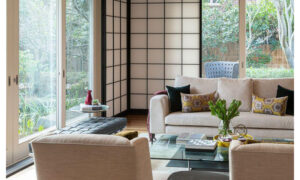Common Landed House Renovation Mistakes to Avoid

Renovating a landed house requires meticulous planning, accurate implementation, and a comprehensive understanding of design and functionality. Landed properties possess distinct characteristics, often featuring intricate design demands owing to their larger dimensions and the possibility of diverse architectural styles. Errors made during the renovation process can then result in expensive corrections, delays, and disappointment with the end product.
Discover the most prevalent renovation pitfalls to avoid, ensuring your landed house design in Singapore aligns with your expectations and needs.
10 Mistakes to Avoid When Renovating Landed Houses
1. Neglecting Structural Assessments
Evaluating the existing structure thoroughly is necessary before diving into renovations. Skipping this step is a common mistake, leading to significant issues such as unstable walls or floors, moisture intrusion, and compromised safety. Always hire a qualified structural engineer to assess the property. This assessment helps identify load-bearing walls, potential weak points, and areas requiring reinforcement. Ignoring structural evaluations risks the building’s integrity and adds unexpected renovation expenses.
2. Inadequate Planning for Utilities and Plumbing
Landed houses often have intricate utility and plumbing layouts due to their multi-floor designs. A frequent mistake is not mapping out these systems adequately before starting renovations. Failure to address utility planning can result in future inconveniences like poor water pressure, electrical outages, or clunky, visible piping that impacts the aesthetic. Consulting with a professional utility planner can ensure that plumbing, electrical wiring, and other essential systems are placed optimally for functionality and aesthetics.
3. Overlooking Local Regulations and Permits
The city-state has strict regulations on landed house renovations. Many homeowners make the mistake of ignoring these regulations, leading to fines and project delays. Before starting any major renovation, consult the Building and Construction Authority (BCA) guidelines. Certain design elements, like extending balconies, adding external structures, or altering roofs, require official permits. Engaging a certified architect or renovation specialist familiar with local renovation policies can ensure compliance and prevent costly setbacks.
4. Underestimating Costs and Budget Overruns
Cost underestimation is a common pitfall in landed house renovation projects. Renovating a larger space typically involves substantial material, labour, and permit costs. Setting an accurate budget is essential. Factor in a buffer for unexpected expenses, such as additional repairs, material shortages, or delayed shipping. Avoid sacrificing quality for lower costs; investing in durable materials ensures that your landed house design stands the test of time, saving money on maintenance and repairs.
5. Ignoring Space Optimisation
Space optimisation is essential in landed house renovation. Many homeowners, especially those transitioning from smaller properties, overlook the importance of designing for efficient flow and accessibility. Poor space planning can result in wasted areas or cramped rooms. Consider working with a professional interior designer familiar with landed house design to make the most of each square foot. This optimisation includes maximising natural light, creating multi-functional spaces, and ensuring ease of movement throughout the property.
ALSO READ: Maximising Small Spaces in Singapore: Transforming Compact Living Areas with Style and Function
6. Choosing the Wrong Materials for Singapore’s Climate
The city-state’s tropical climate requires materials that withstand high humidity, heavy rains, and constant heat. Choosing the wrong materials, such as non-water-resistant wood or low-quality metal fixtures, can lead to rapid deterioration. Always select materials suited to the local climate, such as moisture-resistant wood for flooring, treated metal fixtures, and antifungal coatings for paint. Proper material selection minimises maintenance needs, prolongs the life of the renovation, and keeps the home’s appearance intact.
7. Overly Trend-Driven Design Choices
Trends can be tempting, but choosing overly trendy designs can make the home look outdated quickly. Instead, focus on timeless design elements that complement the unique features of landed houses. Overusing trend-driven elements like specific colours or decorative accents may look good initially, but they often require further renovations as trends change. Balance current design trends with classic features, ensuring your landed house remains stylish and valuable over time.
8. Neglecting Outdoor Spaces
Outdoor spaces are a valuable aspect of landed house design, offering extra living areas and enhancing property value. Neglecting the garden, patio, or terrace is a missed opportunity. Consider landscaping, outdoor lighting, and seating arrangements that make the outdoor area inviting and functional. Additionally, investing in weather-resistant furniture and proper drainage for outdoor spaces can enhance usability, creating a versatile extension of your indoor living area.
9. Attempting DIY Renovations Without Expertise
Although DIY renovations can save costs, they often lead to more issues if not done correctly. Attempting to handle plumbing, electrical work, or structural changes without professional expertise is risky and can compromise safety. Complex tasks for a landed house are best left to experienced contractors and renovation specialists who understand the unique requirements of these properties. Hiring professionals ensures quality, durability, and adherence to safety standards, ultimately reducing the need for repairs.
10. Underestimating the Importance of Future-Proofing
Lastly, many homeowners overlook the importance of future-proofing in landed house renovation. Consider the potential need for flexibility in your design, such as adding accessible features for ageing in place, planning extra storage, or installing smart home technology. Future-proofing your home during renovations not only makes it adaptable to changing needs but also increases its long-term value, making it an appealing choice for potential future buyers.
Conclusion
Preventing these typical errors guarantees that your renovation of a landed house proceeds seamlessly, remains within budget, and aligns with your design and functional objectives. Engaging in thorough planning, establishing a realistic budget, and seeking advice from professionals who specialise in landed house design in Singapore are all necessary. Your landed house can evolve into a stunning, practical, and lasting residence that caters to your specific requirements and way of life by adopting this appropriate strategy.
Visit Home Guide to transform your landed house into the home of your dreams!







